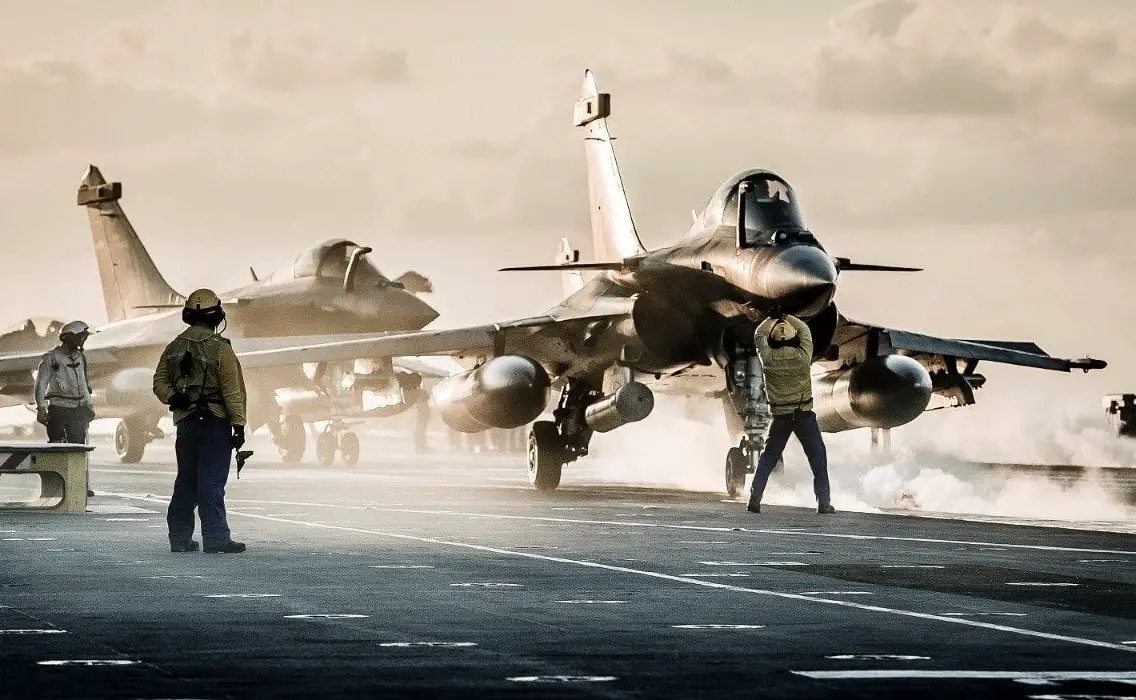French defence company Dassault Aviation is likely to bring the naval version of the Rafale aircraft to India in early 2022 to showcase its ability to carry out a ski-jump, which is a crucial take-off capability to operate from Indian aircraft carriers. Dassault, which is eyeing a mega contract with the Indian Navy for new fighters, has offered to bring the Rafale M (Marine) to India. The Indian Navy plans to procure new fighters to replace the Russian MiG 29Ks. The Rafale M will not take off from the aircraft carrier (during the showcase) but from the shore-based test facility (SBTF) at INS Hansa, Goa. The Dassault Aviation is confident and wanted to showcase their capability in India itself.
The Dassault Rafale is a French twin-engine, canard delta wing, multirole fighter aircraft designed and built by Dassault Aviation. Equipped with a wide range of weapons, the Rafale is intended to perform air supremacy, interdiction, aerial reconnaissance, ground support, in-depth strike, anti-ship strike and nuclear deterrence missions. The Rafale is referred to as an “omnirole” aircraft by Dassault. In April 2011, the Indian Air Force (IAF) shortlisted the Rafale and Eurofighter Typhoon for the US$10.4 billion contract. On 31 January 2012, the IAF announced the Rafale as the preferred bidder.

Rafale M F3-R is same as Rafale C F3-R but carrier-borne version for the French Naval Aviation, which entered service in 2001. For carrier operations, the M model has a strengthened airframe, longer nose gear leg to provide a more nose-up attitude, larger tailhook between the engines, and a built-in boarding ladder. Consequently, the Rafale M weighs about 500 kg (1,100 lb) more than the Rafale C. It is the only non-US fighter type cleared to operate from the decks of US carriers, using catapults and their arresting gear, as demonstrated in 2008 when six Rafales from Flottille 12F integrated into the USS Theodore Roosevelt Carrier Air Wing interoperability exercise.
Carrier-based fighters primarily come in three categories — STOVL (short take-off and vertical landing), STOBAR (Short Take-off but Arrested Recovery) and CATOBAR (catapult take-off but arrested recovery). French aircraft carrier Charles de Gaulle and American carriers use CATOBAR while Indian carriers — INS Vikramaditya and an indigenous one that is under trial — employ STOBAR. That’s why foreign fighters have to showcase the capability as a basic requirement. A fighter aircraft’s behaviour for a few seconds after ski-jump take-offs, until wing-borne flight takes place, is critical to achieve a successful launch from carriers. Rafale M’s competitor — the F/A-18 Super Hornet fighter of Boeing — had demonstrated the ski-jump capability in December 2020.
















